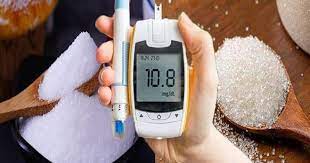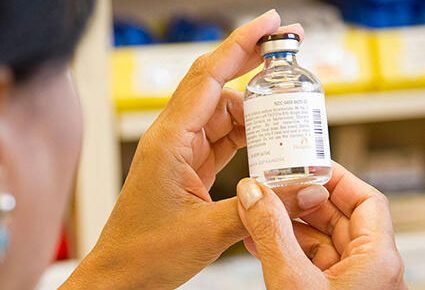You’ve heard the terms. Maybe you’ve even gotten the diagnosis. Metabolic syndrome. Prediabetes. They sound clinical, a bit intimidating, and honestly, a little vague. They’re not full-blown diseases, but they are a flashing red light on your health dashboard. A warning.
And here’s the deal: the most powerful response to that warning isn’t found in a prescription bottle. Not primarily, anyway. It’s found in something far more fundamental—your daily life. It’s called lifestyle medicine, and it’s the closest thing we have to a silver bullet for reversing these conditions.
What Are We Actually Talking About? Metabolic Syndrome & Prediabetes
Let’s break it down without the scary medical jargon. Think of your body as a finely tuned engine. Metabolic syndrome is what happens when that engine starts to develop a cluster of related problems. You only need three of the five following issues to get the diagnosis:
- A large waist circumference (think “apple-shaped” body)
- High blood pressure
- High blood sugar (but not yet diabetic)
- High triglycerides (a type of fat in your blood)
- Low HDL (“good”) cholesterol
Prediabetes is a key piece of this puzzle. It means your blood sugar is higher than it should be, but not high enough to be type 2 diabetes. Your engine is sputtering, struggling to process fuel properly. The scary part? It’s a one-way street to diabetes if you do nothing. The incredible part? This is the stage where you can literally turn the car around.
The Lifestyle Medicine Prescription: It’s Not Just “Eat Less, Move More”
Lifestyle medicine isn’t a fad diet or a punishing exercise regime. It’s a structured, evidence-based therapeutic intervention. It targets the root causes. It’s about upgrading your engine’s fuel, maintenance schedule, and operating manual, all at once.
1. The Food-First Philosophy
Forget calorie counting for a second. Let’s talk about food quality. The goal is to eat in a way that tames the blood sugar rollercoaster and reduces inflammation.
The superstar here is a whole-food, plant-predominant eating pattern. That doesn’t mean you have to go 100% vegan overnight. It means building your plate around:
- Non-starchy vegetables: Fill half your plate with these. We’re talking leafy greens, broccoli, peppers, cauliflower—the colorful stuff.
- Fiber-rich foods: Beans, lentils, whole grains like oats and quinoa. Fiber slows down sugar absorption and feeds your good gut bacteria.
- Healthy Fats: Avocados, nuts, seeds, and olive oil. They help you feel full and support heart health.
And what to minimize? That’s the other side of the coin. The goal is to drastically reduce ultra-processed foods, sugary drinks, and refined carbs (white bread, white pasta, pastries). These are the primary drivers of insulin resistance—the core problem in metabolic syndrome.
2. Moving Your Body is Non-Negotiable
Exercise isn’t just for weight loss. It’s a direct medicine for your metabolism. Muscle is metabolically active tissue; the more you have and the more you use it, the better your body handles sugar.
You need a two-pronged approach:
- Aerobic Exercise: The get-your-heart-pumping stuff. Brisk walking, cycling, swimming. Aim for at least 150 minutes per week. This improves your heart’s health and helps burn sugar for fuel.
- Strength Training: This is absolutely critical. Building muscle mass makes you more insulin-sensitive. You don’t need a gym; bodyweight exercises like squats, push-ups, and lunges work wonders. Twice a week can make a dramatic difference.
3. The Secret Weapon: Sleep and Stress Management
This is the part most people ignore, and it’s a huge mistake. When you’re sleep-deprived or chronically stressed, your body is flooded with cortisol. This hormone directly tells your liver to release more glucose into your bloodstream and makes your cells more resistant to insulin.
Prioritizing 7-9 hours of quality sleep and finding a daily stress-reduction practice—like mindfulness, deep breathing, or even a quiet walk—isn’t self-indulgence. It’s a core part of the treatment protocol for metabolic health.
What Does Success Look Like? The Proof is in the Numbers
This isn’t just theoretical. The data from landmark studies like the Diabetes Prevention Program (DPP) is staggering. Intensive lifestyle intervention—the kind we’re talking about—was nearly twice as effective as the leading medication at preventing progression from prediabetes to type 2 diabetes.
Reversal isn’t a vague promise. It’s measured. You’ll see it in:
| Biomarker | Goal for Reversal |
| Fasting Blood Sugar | Drop below 100 mg/dL |
| HbA1c (3-month average) | Fall below 5.7% |
| Waist Circumference | Reduce significantly (men < 40 in, women < 35 in) |
| Blood Pressure | Consistently below 120/80 mmHg |
Making It Stick: The “How” Behind the “What”
Okay, so you know what to do. But how do you actually do it without burning out? The key is to think in terms of small, sustainable shifts, not overnight overhauls.
- Start with one meal. Maybe it’s committing to a vegetable-packed breakfast. Nail that, then move to lunch.
- Park farther away. Add 500 extra steps to your day without “exercising.”
- Swap your snack. Instead of chips, try an apple with a tablespoon of peanut butter.
- Set a bedtime alarm. Seriously. It signals to your brain that the day is winding down.
It’s about progress, not perfection. A bad meal, a missed workout—these are not failures. They are data points. You just get back on track with the very next choice you make.
A Final Thought: You Hold the Prescription
The diagnosis of metabolic syndrome or prediabetes can feel like a life sentence. But what if we reframed it? What if it’s not a verdict, but an invitation? An invitation to rediscover the power of food as nourishment, movement as joy, and rest as a necessity.
The most powerful tools for healing aren’t locked away in a clinic. They’re in your kitchen, in your walking shoes, and in your ability to make one small, consistent choice after another. Your body is whispering—or maybe shouting—that it’s time for a change. And the beautiful part is, you have everything you need to answer the call.




